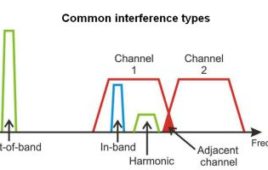Wireless giant Verizon is in a tug-of-war with the Competitive Carriers Association over whether the FCC should implement an in-band aggregation limit for millimeter wave 5G spectrum.
In a Tuesday filing, Verizon urged the Commission to reject CCA’s assertion that the FCC needs to adopt spectrum aggregation limits in each of the recently designated 5G bands in addition to the overall aggregation limit already established to effectively combat “anti-competitive actions.”
“Verizon showed that the overall limit that the Order established risks quashing innovation and investment in nascent 5G services. But CCA’s proposed reconsideration would go even farther in the wrong direction; it would destroy the Commission’s attempt to ensure that ‘providers will be able to access a sufficient amount of (millimeter wave) spectrum to facilitate the deployment of new services and innovation that will benefit consumers,’” Verizon wrote.
The carrier’s comments come in response to a petition for reconsideration filed by CCA back in December. In that document, CCA applauded the Commission for its establishment of a 1250 MHz spectrum aggregation limit for auction spectrum across the 28 GHz, 37 GHz, and 39 GHz bands, but argued further limits must be imposed in each band to promote competition. As things stand, CCA pointed out one carrier could aggregate all 850 MHz of the 28 GHz band, specifically referencing Verizon’s recent transaction with XO to lease – and potentially buy – spectrum covering 65 percent of the POPs for the LMDS service band (27.5-28.35 GHz, 29.1-29.25 GHz, and 31.0-31.3 GHz) in the top 60 markets nationwide.
“This is not an illusory concern. The wireless industry has seen numerous instances of bands monopolized by larger carriers,” CCA commented, with a nod to AT&T and Verizon’s dominance of available cellular licenses. “Without adopting appropriate competitive protections at the outset, the largest two carriers may be allowed to continue down this path again.”
Verizon, however, said CCA’s petition failed to meet the standard for reconsideration and produced “no economic evidence” for its argument that bands could be monopolized in a way that harms other carriers. Additionally, Verizon pointed out those other carriers – under current rules – have guaranteed access to other millimeter wave bands.
The Commission routinely denies reconsideration requests that, like CCA’s request for in-band aggregation limits, are nothing more than restatements of arguments previously made and rejected. It should do so here,” Verizon concluded.
The fight for 5G spectrum is on
The back-and-forth at the FCC comes as the fight for 5G spectrum heats up in the wake of the FCC’s July 2016 order opening up nearly 11 GHz of licensed and unlicensed spectrum above 24 GHz for 5G.
Even before the order was approved, Verizon took early initiative with a February deal to acquire the fiber assets of XO Communications and lease 28 GHz spectrum from XO affiliate NextLink Wireless with the option to buy down the line. That deal closed on Wednesday.
More recently AT&T has been making quiet moves to acquire millimeter wave spectrum via the purchase of FiberTower Corporation. That deal will bring the carrier 5G spectrum in the 24 GHz and 39 GHz bands across 46 U.S. cities, including major metro areas like New York City, Los Angeles, and Washington DC, as well as the home cities – Seattle and Kansas City – of rival carriers T-Mobile and Sprint.
Fellow tier-1 carrier T-Mobile already has a good chunk of spectrum in the 28 GHz to 39 GHz bands. And on Tuesday, Dish Network – which has already been floated as an M&A target due to its mid-band spectrum holdings – announced an agreement to acquire 28 GHz spectrum licenses covering four markets from EchoStar Corporation.
The fight to grab as much millimeter wave spectrum as possible could intensify further this year, especially given the FCC’s recent settlement with spectrum holding company Straight Path Communications. That deal gave Straight Path 12 months to offload its massive reserve of 28 GHz and 39 GHz spectrum or else face a huge $85 million fine.
Straight Path CEO Davidi Jonas noted the company holds 735 millimeter wave licenses in the 28 GHz and 39 GHz bands and an average of 620 MHz in the top 30 U.S. markets. The company’s holdings represent about 95 percent of the commercially available 39 GHz spectrum licenses and a significant portion of available 28 GHz spectrum, including in key markets like New York and San Francisco, Jonas reported.
Filed Under: Wireless • 5G and more, Telecommunications (spectrums)




